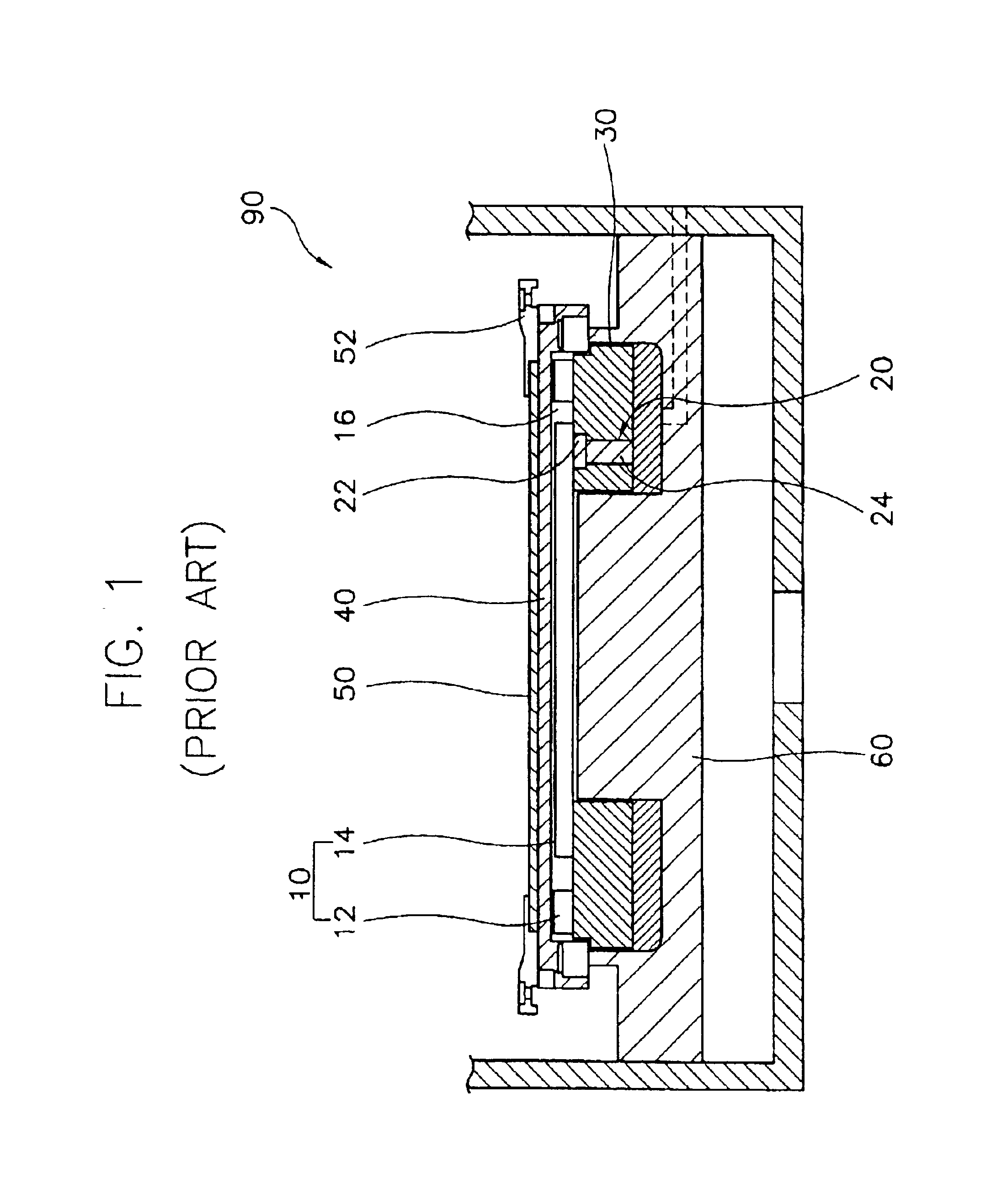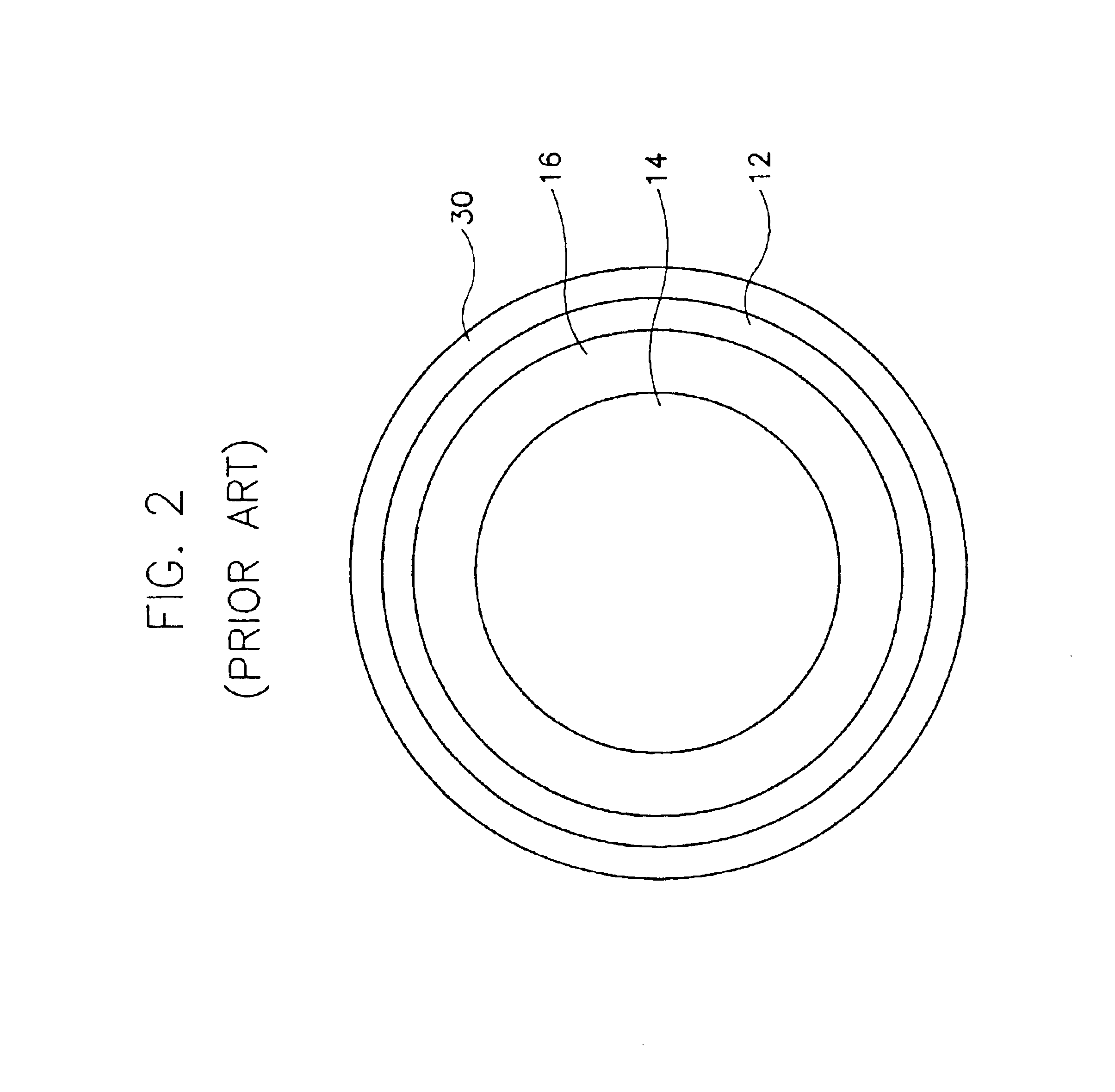Heater assembly for manufacturing a semiconductor device
a semiconductor device and assembly technology, applied in the direction of ohmic resistance heating, hot plate heating arrangement, coating, etc., can solve the problems of significant heat loss from the side surface of the peripheral portion of the wafer, loss of functional stability, and uneven heating of the integrated circuit pattern, so as to increase the temperature of the outer heater and increase the temperature of the central portion of the susceptor
- Summary
- Abstract
- Description
- Claims
- Application Information
AI Technical Summary
Benefits of technology
Problems solved by technology
Method used
Image
Examples
Embodiment Construction
As demonstrated above, increasing the amount of heat emitted from the outer heater of the conventional dual heater assembly does not reduce the temperature difference between the inner portion and the central portions of the wafer sufficiently. In another experiment, the results of which are illustrated in FIG. 5, the conventional dual heater system was computer-simulated to determine why the temperature difference of the wafer surface does not decrease when the amount of heat emitted from the outer heater is increased.
FIG. 5 illustrates the temperature distribution of the conventional heater assembly including a dual heater system, analyzed by a Super-computer, wherein the temperature of the inner heater is set to 390° C. and the temperature of the outer heater is set to 450° C. Referring to FIG. 5, the dual heater system includes a support 30 for supporting the outer heater 12 and the inner heater 14. A susceptor 40 supports the wafer, and a heater cup 60 contains the support 30. ...
PUM
| Property | Measurement | Unit |
|---|---|---|
| temperature | aaaaa | aaaaa |
| temperatures | aaaaa | aaaaa |
| temperatures | aaaaa | aaaaa |
Abstract
Description
Claims
Application Information
 Login to View More
Login to View More - R&D
- Intellectual Property
- Life Sciences
- Materials
- Tech Scout
- Unparalleled Data Quality
- Higher Quality Content
- 60% Fewer Hallucinations
Browse by: Latest US Patents, China's latest patents, Technical Efficacy Thesaurus, Application Domain, Technology Topic, Popular Technical Reports.
© 2025 PatSnap. All rights reserved.Legal|Privacy policy|Modern Slavery Act Transparency Statement|Sitemap|About US| Contact US: help@patsnap.com



